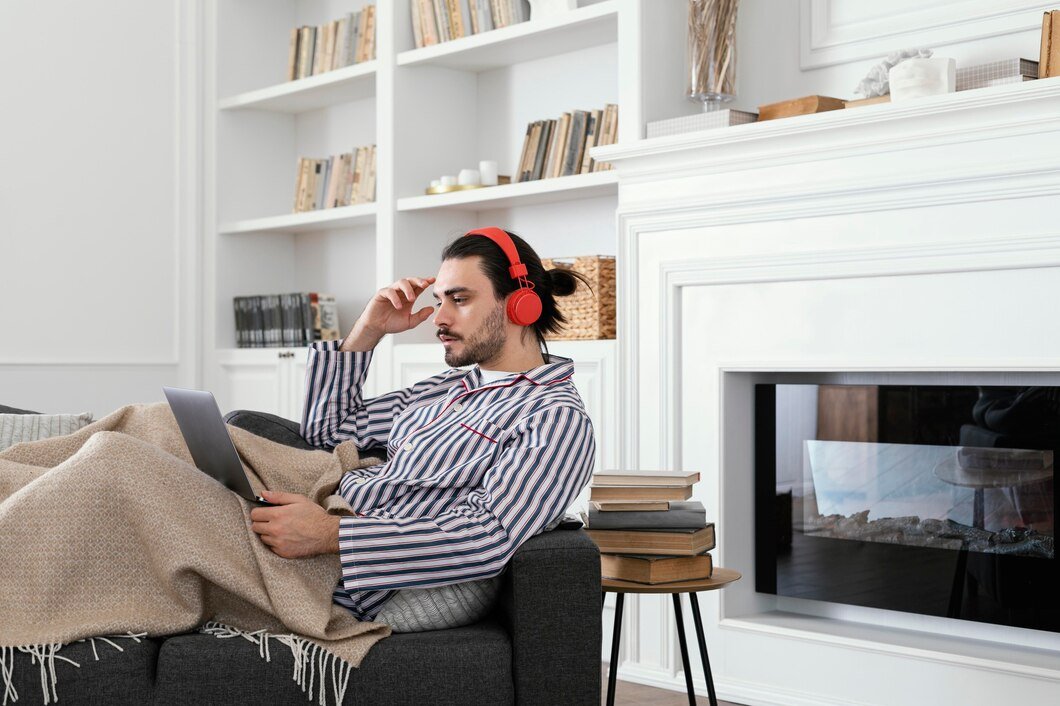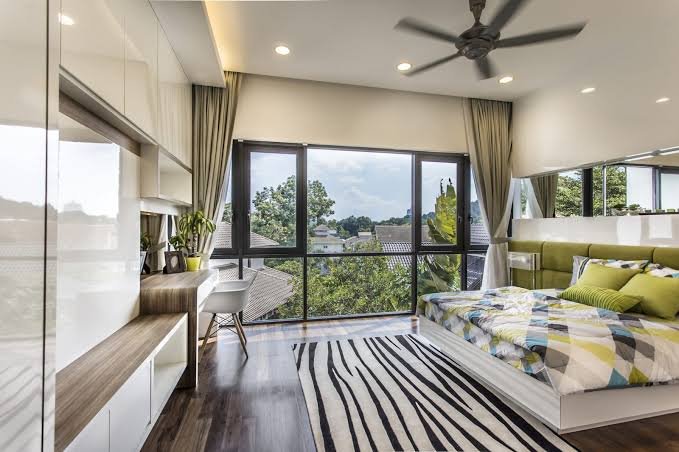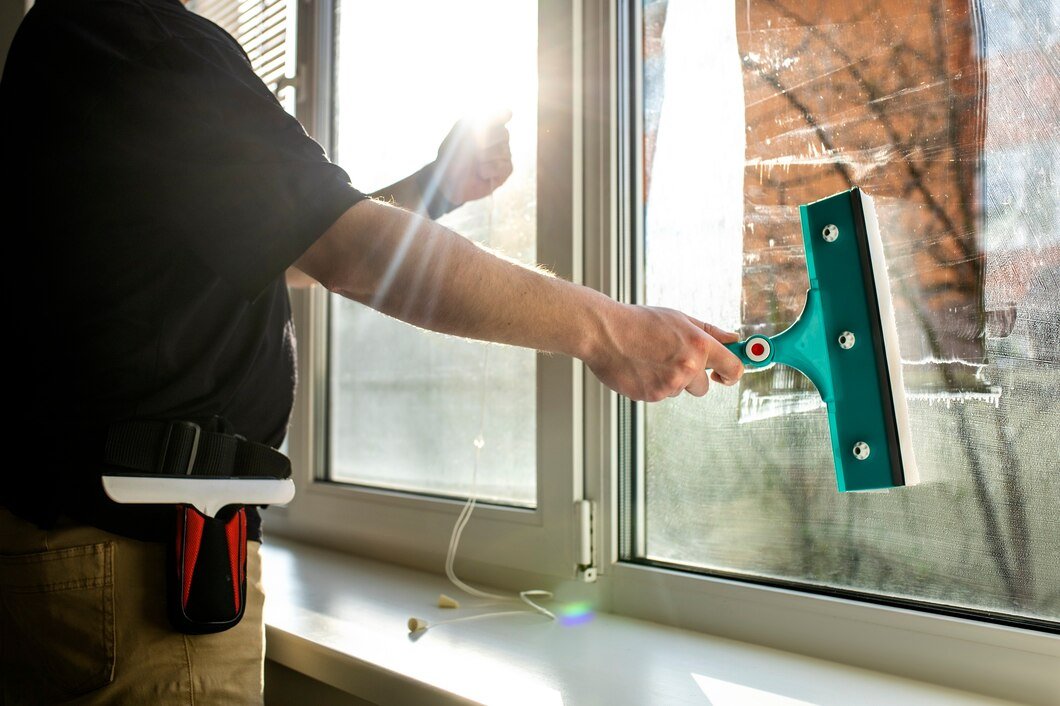Home
The Ultimate Guide to the Air Over Motor E318204 Attic Fan

Are you on the hunt for the perfect attic fan that’s powerful, reliable, and designed to keep your home cool? The air over motor E318204 attic fan is a standout option for improving your home’s ventilation system. In this guide, we’ll break down everything you need to know about this unique attic fan, from its features and benefits to installation tips. By the end, you’ll understand why the air over motor E318204 attic fan could be the best choice for your home.
What Is the Air Over Motor E318204 Attic Fan?
The air over motor E318204 attic fan is a high-performance fan designed to help regulate attic temperatures. This fan operates with an “air over” motor, meaning the airflow generated by the fan helps cool the motor itself. This feature ensures that the motor doesn’t overheat, even during long periods of operation.
Whether you live in a hot climate or just want to extend the life of your roof and insulation, an attic fan like this can make a huge difference.
Why Is an Attic Fan Important?
Attics can trap a lot of heat, especially during summer. Without proper ventilation, your attic could reach temperatures of over 150°F! This intense heat not only affects your home’s comfort but can also lead to higher energy bills, roof damage, and insulation wear.
An attic fan works by pulling out hot air and replacing it with cooler air from outside. The result? A cooler home, lower utility bills, and a healthier attic space.
Key Features of the Air Over Motor E318204 Attic Fan
1. Air Over Motor Technology
This fan uses a unique design where the motor stays cool by the airflow it creates. This means longer motor life and better efficiency.
2. High Durability
The E318204 model is built with high-quality materials to withstand the elements, making it ideal for long-term use.
3. Energy Efficiency
Thanks to its efficient motor, this fan provides excellent ventilation without consuming excessive energy, saving you money in the long run.
4. Quiet Operation
Nobody wants a noisy fan disrupting their peace. Luckily, the E318204 attic fan operates quietly, letting you enjoy a cooler home without the noise.
Benefits of Installing the Air Over Motor E318204 Attic Fan
1. Reduces Energy Costs
By cooling your attic, the fan eases the load on your air conditioner, leading to significant savings on energy bills.
2. Prolongs Roof Life
Excess heat and moisture can wreak havoc on your roof. The E318204 fan helps remove these threats, extending your roof’s lifespan.
3. Improves Home Comfort
With a cooler attic, the overall temperature of your home stabilizes, making every room more comfortable.
4. Prevents Mold and Mildew
The fan reduces moisture buildup in your attic, which can help prevent mold, mildew, and other moisture-related issues.
How to Install the Air Over Motor E318204 Attic Fan
While it’s always a good idea to hire a professional for installation, you can tackle it yourself if you’re handy. Here’s a step-by-step guide:
- Pick the Right Location: The fan should be installed at the highest point in your attic for maximum airflow.
- Prepare the Area: Cut a hole in your roof or wall to match the size of the fan.
- Install the Fan: Secure the fan in place using the provided hardware.
- Connect the Wiring: Follow the manufacturer’s instructions to connect the fan to your home’s electrical system.
- Test It Out: Turn on the fan to ensure it’s working correctly.
Tips for Maintaining Your Attic Fan
- Clean the Blades Regularly: Dust and debris can reduce efficiency, so give the fan blades a good cleaning every few months.
- Inspect the Motor: Check for signs of wear or overheating to ensure the motor stays in good shape.
- Listen for Unusual Noises: If the fan starts making strange noises, it might need repairs or lubrication.
- Replace Filters (If Applicable): Some attic fans come with filters that need regular replacement.
Is the Air Over Motor E318204 Attic Fan Right for You?
If you’re looking for a durable, efficient, and low-maintenance attic fan, the air over motor E318204 is hard to beat. It’s perfect for homeowners who want to save on energy costs, protect their roof, and enjoy a cooler home year-round.
FAQs About the Air Over Motor E318204 Attic Fan
1. How much does the E318204 attic fan cost?
Prices vary depending on the retailer, but you can expect to pay between $150 and $300 for this model.
2. Is the E318204 fan easy to install?
Yes! While professional installation is recommended, many homeowners find it simple to install with basic tools.
3. Can this fan be used in all climates?
Absolutely. The fan is designed to handle both hot and humid climates, making it versatile for most homes.
4. How long does the motor last?
With proper maintenance, the motor can last 10+ years, thanks to its air over cooling design.
5. Does the fan require a lot of electricity?
No. The E318204 attic fan is energy-efficient, helping you save on electricity costs.
6. Is the fan noisy?
Not at all. It’s designed to operate quietly, so you won’t even notice it’s running.
Conclusion
The air over motor E318204 attic fan is a fantastic investment for any homeowner. It combines advanced features, energy efficiency, and durability to provide top-notch attic ventilation. By keeping your attic cool and moisture-free, this fan protects your home, lowers your energy bills, and enhances your overall comfort.
Home
Keelee Breeze Van Winkle – Discover Modern Elegance in Versatile

Introduction to Keelee Breeze Van Winkle
The concept of keelee breeze van winkle represents more than just a design choice—it symbolizes an approach that blends modern flair with timeless charm. With creativity and function guiding every step, this style embodies flexibility, comfort, and sophistication. Whether you seek to refresh a living room or reinvent an office space, embracing this aesthetic offers endless inspiration.
1. The Origins of Keelee Breeze Van Winkle
The phrase “keelee breeze van winkle” traces back to a design philosophy that emphasizes soothing tones, natural materials, and open layouts. Drawing inspiration from coastal aesthetics and vintage accents, it combines:
- Breeze-like color palettes
- Effortless movement in décor
- A touch of nostalgia
These elements work together to create inviting and adaptable interiors.
2. Core Principles of the Style
2.1 Calming Color Palette
Choose soft blues, pale greys, sandy beiges, and dusty whites. These hues evoke fresh air and serene landscapes.
2.2 Layering Textures
Layer natural wood, woven textiles, linen, and subtle metals. This variation in surfaces adds warmth while preserving visual interest.
2.3 Furnishings with Story
Incorporate vintage pieces or those boasting artisanal touches. They enhance personality without overpowering spaces.
2.4 Fluid Layouts
Opt for open, adaptable layouts. Flexible seating, moveable tables, and modular furniture support evolving needs.
3. Crafting a Keelee Breeze Van Winkle Living Room
To transform your living area into a keelee breeze van winkle haven:
- Start with a neutral canvas. Paint walls in muted tones.
- Add a statement piece. Consider a gently distressed coffee table or bouclé sofa.
- Layer accents. Use throw pillows, plaids, and vintage rugs to introduce color.
- Balance textures. Soft fabrics pair well with a reclaimed-wood bookshelf or rattan side chairs.
- Add green life. Potted plants, especially eucalyptus or palms, enhance the breezy atmosphere.
4. Kitchen & Dining Room Elegance
Incorporate the keelee breeze van winkle aesthetic by:
- Natural cabinetry. Choose wood grains or painted finishes in airy shades.
- Open shelving. Display ceramic dishes, glassware, and linen tea towels.
- Soft lighting. Pendant lights in wicker or brushed brass bring warmth.
- Multifunctional furniture. A movable butcher block island or collapsible table adds versatility.
5. Serene Bedrooms with Character
Create a restful retreat:
- Textile layering. Blend cotton, linen, and wool blankets.
- Vintage headboards. Salvaged wood or metal brings nostalgia.
- Accent hues. Soft blush or sage tones add gentle contrast.
- Ambient lighting. Bedside lanterns or rattan lamps maintain calm.
6. Functional Yet Stylish Home Office
A keelee breeze van winkle workspace should feel airy and inspiring:
- Neutral desk backdrop. White or driftwood finishes keep focus.
- Minimalist storage. Wicker baskets and floating shelves support organization.
- Nature-infused accents. Desk plants, botanical art, or a woven rug brighten the space.
- Flexible seating. Add a cushioned bench or archival stool for variety.
7. Outdoor & Transitional Living
Take the indoors out:
- Open balconies. Opt for bamboo chairs and airy cushions.
- Natural flooring. Use teak decking or stone pavers.
- Outdoor textiles. Durable linen or cotton pillows foster comfort.
- Planter groupings. Herbs, ferns, and succulents mimic a breezy garden vibe.
8. Sustainability & Ethical Choices
keelee breeze van winkle values conscious living:
- Reclaimed materials. Salvaged tables or repurposed frames.
- Eco-fabrics. Linen, hemp, or recycled cotton ensure low impact.
- Handcrafted items. Support artisans to bring unique pieces into your home.
9. Balancing Aesthetic & Function
Even though the style prioritizes beauty, it also values usability:
- Smart storage. Cabinets with dual-purpose surfaces.
- Mattress layering. Enhance comfort with breathable materials.
- Task lighting. Adjustable reading lamps fit the aesthetic and serve daily needs.
10. FAQ: Your Guide to
Q1: What colors work best with keelee breeze van winkle?
A1: Soft neutrals—pale blue, sandy beige, muted grey, and white—form the perfect foundation.
Q2: Can small apartments adopt this style?
A2: Absolutely. Light tones, multipurpose furniture, and streamlined décor visually expand tight spaces.
Q3: Is vintage furniture required?
A3: No. You can mix modern and vintage; adding just one or two vintage pieces can anchor the style.
Q4: How do I maintain this look over time?
A4: Rotate textiles seasonally, add fresh greenery, and occasionally update pillows or throws to renew the space.
Q5: Can this style work with bold art?
A5: Yes—as long as bold pieces are balanced by neutral surroundings and minimal clutter.
Q6: Is this aesthetic kid-friendly?
A6: Definitely. Use washable fabrics, cushion covers, and stain-resistant rugs to maintain the look without stress.
Conclusion
By embracing keelee breeze van winkle, you invite a harmonious blend of modern elegance, cozy comfort, and practical living. From serene bedrooms to functional home offices, this style thrives on natural elements, vintage charm, and sustainability. Most importantly, it adapts effortlessly as your life evolves. Start small, stay intentional, and you’ll soon enjoy a home that feels calm, inviting, and uniquely yours.
Home
Ceiling Lights That Make Your Bedroom Feel Like a 5-Star Hotel

Introduction to 5-Star Hotel
Imagine stepping into a luxury hotel suite: plush bedding, curated decor, and lighting that wraps the room in warmth and elegance. The game changer? Ceiling lights. These fixtures aren’t just functional—they’re the unsung heroes that transform bland spaces into retreats worthy of a Michelin-starred getaway. Let’s explore how to bring that 5-star magic into your bedroom with the perfect ceiling light for bedroom setups.
Why Ceiling Lights Are the Bedroom’s Best Friend?
Ceiling lights set the stage for your bedroom’s entire vibe. Unlike table lamps or floor lights, they cast an even glow that blankets the room, creating harmony between style and function. Whether you’re reading, relaxing, or getting ready, the right ceiling fixture ensures your space feels polished and intentional—like a hotel designer whispered secrets into your decor.
But not all ceiling light for bedroom are created equal. The key is balancing aesthetics with practicality. Think dimmable LEDs for mood-setting, sleek flush mounts for low ceilings, or a show stopping chandelier for drama. Let’s break down the essentials.
The “It” List: Ceiling Light Styles That Scream Luxury
Want your bedroom to feel like a suite at the Ritz? Start with these hotel-inspired ceiling lights:
- Modern Chandeliers: Swap stuffy crystal designs for minimalist chandeliers with matte black or brass finishes. They add grandeur without overwhelming smaller spaces.
- Flush Mounts with Edge: Gone are the boring discs! Opt for flush mounts with geometric patterns or metallic accents—perfect for low ceilings that still crave glam.
- Pendant Clusters: Group 2-3 small pendants above your bed for a custom, artful look. Bonus: They double as reading lights!
- Recessed Lighting: Invisible yet impactful, recessed LEDs create a clean, modern base. Pair them with a statement fixture for layered lighting.
Hotels often mix these styles to craft depth. Why not you?
How to Choose a 5-Star-Worthy Ceiling Light?
Before swiping your credit card, ask:
- Is it proportional? A tiny fixture in a large room feels cheap, while an oversized one cramps the space. Measure your room and aim for a fixture diameter (in inches) close to your room’s width (in feet).
- Does it dim? Hotels thrive on adjustable lighting. Dimmable LEDs let you pivot from “morning hustle” to “midnight unwind” with a slider.
- What’s the color temperature? Warm white (2700K-3000K) mimics candlelight, ideal for relaxation. Save cool tones for the bathroom!
Pro tip: If your bedroom doubles as a workspace, add a ceiling spotlight near your desk for task lighting without killing the vibe.
LEDs: The Secret of Hotel’s Elegant Vibes
Why do luxury hotels rarely use harsh, buzzing bulbs? They’ve embraced LED ceiling lights. Here’s why you should too:
- Energy Efficiency: Save on bills while keeping your room lit like a spa.
- Longevity: No more awkward ladder climbs to replace bulbs every few months.
- Smart Features: Sync LEDs with your phone to schedule sunrise wake-ups or sunset dimming.
For a next-level touch, install color-changing LEDs behind crown molding.
Steal These Hotel Lighting Hacks
- Layer Like a Pro: Combine a central ceiling light for bedroom with wall sconces or under-bed LEDs. Hotels use layers to flatter every corner.
- Highlight Your Best Assets: Angle ceiling spotlights toward artwork or a statement headboard. It’s like Instagram filters for real life.
- Go Big or Go Home: A bold, oversized fixture (like a sputnik chandelier) anchors the room and sparks conversation—just like in boutique hotels.
Keep It Clean: Maintenance Tips for Lasting Luxury
Even the chicest ceiling lights lose their sparkle if dusty. Every few weeks:
- Wipe fixtures with a microfiber cloth.
- For glass shades, use a vinegar-water mix to avoid streaks.
- Check for flickering bulbs—they’re mood killers.
Treat your lights like jewelry: a little care keeps them shining.
Final Touch: Your Bedroom’s Red Carpet Moment
The difference between “meh” and “magnificent” often boils down to lighting. With the right ceiling lights, your bedroom can ooze sophistication, calm, and that irresistible hotel charm—no concierge needed.
Ready to upgrade? Brands like Comet Lighting offer curated collections that blend runway trends with timeless appeal. Whether you’re into sleek smart lights or vintage-inspired pendants, your 5-star bedroom is just a fixture swap away.
Home
Is 205 Tinted Window Darker or 355? A Clear Answer

When it comes to window tinting, one of the most common questions is: Is 205 tinted window darker or 355? If you’ve ever felt unsure about the difference between these two numbers, don’t worry—you’re not alone! In this post, we’ll break it down in simple terms, help you understand the key differences, and guide you on choosing the right tint for your needs.
What Do 205 and 355 Mean in Window Tinting?
First things first—what do these numbers even represent? These numbers, like 205 and 355, refer to the visible light transmission (VLT) percentage of the window tint. This is the amount of light that passes through your window.
- 205 Tint: This means the tint allows only 20% of light to pass through, blocking 80% of the light.
- 355 Tint: This allows 35% of light to pass through, blocking 65% of the light.
So, the lower the number, the darker the tint. In this case, 205 is darker than 355 because it lets less light in.
How Much Privacy Do They Offer?
When deciding on tint darkness, privacy is often a top consideration. Let’s compare the two:
- 205 Tint Privacy: With its darker shade, 205 offers a high level of privacy. It’s harder for people outside to see into your car or home, especially during the day.
- 355 Tint Privacy: While it still provides privacy, 355 is lighter, so it doesn’t obscure visibility as much. People outside might see inside more easily compared to 205.
If privacy is a top priority, 205 is your better choice.
How Do They Impact Visibility?
While darker tints provide more privacy, they can also reduce visibility from the inside—especially at night. Let’s break it down:
- 205 Tint Visibility:
- During the day: Clear visibility inside.
- At night: Can make it harder to see, especially in poorly lit areas. This might be a concern for some drivers.
- 355 Tint Visibility:
- During the day: Slightly brighter inside, but still reduces glare.
- At night: Better visibility compared to 205, as it allows more light in.
If you frequently drive at night, 355 might be more practical for safety reasons.
Heat Rejection: Does Darkness Affect Temperature?
Many people choose window tinting to block heat from the sun. While darker tints like 205 block more light, the heat rejection depends on the quality of the film, not just the darkness.
- 205 Tint: Darker tint often blocks more light and glare, which can help reduce heat buildup inside your car or home.
- 355 Tint: Lighter tint allows more sunlight in, but high-quality 355 tints can still offer decent heat rejection.
If you’re looking for maximum heat reduction, go for 205. However, always check the specifications of the tint film for heat-blocking capabilities.
Legality: Can You Use 205 or 355 in Your Area?
One critical thing to consider is the legal limit for window tinting in your location. Laws vary depending on the state, country, or region, and using a tint that’s too dark (like 205) might result in fines.
- 205 Tint: Often considered too dark for front windows in many areas but might be legal for rear windows.
- 355 Tint: More commonly allowed on front windows but still provides some shading.
Before installing either tint, check your local laws to avoid potential legal issues.
Which Tint Should You Choose?
Ultimately, the choice between 205 and 355 depends on your needs:
- Choose 205 Tint if:
- You want maximum privacy.
- You live in a sunny area and need more heat rejection.
- You don’t mind reduced nighttime visibility.
- Choose 355 Tint if:
- You prefer a lighter, more balanced look.
- You want better nighttime visibility.
- You’re concerned about legal restrictions on darker tints.
Final Thoughts
So, is 205 tinted window darker or 355? Yes, 205 is darker, providing more privacy and light-blocking benefits. However, it’s not always the best choice for everyone. Consider your priorities, driving habits, and local regulations before making a decision. Whether you pick 205 or 355, make sure the tint meets your needs and enhances your comfort on the road or at home.
FAQs About 205 and 355 Tint
1. Can you tell the difference between 205 and 355 tint?
Yes, you can! 205 tint appears much darker than 355, making it harder to see through from the outside.
2. Is 205 tint legal for car windows?
It depends on your location. Many areas have restrictions on how dark front window tints can be, so check your local tint laws before installing it.
3. Does 205 tint block more heat than 355?
Generally, yes. Darker tints like 205 block more sunlight and heat, but the exact heat rejection depends on the quality of the tint film.
4. Which is better for night driving: 205 or 355?
355 is better for night driving because it allows more light in, making it easier to see in low-light conditions.
5. Can I use 205 tint on my home windows?
Absolutely! 205 tint is a great choice for home windows if you want privacy and heat reduction.
-

 Health1 month ago
Health1 month agoMillies Wolfheart: The Premium Choice for Your Dog’s Health
-

 Technology2 months ago
Technology2 months agoProblem in QELL094X-FV2 Model: What is FUIXICNOS74 Model?
-

 Crypto6 months ago
Crypto6 months agoThe KDJ 指标 (KDJ Indicator) on Thinkorswim for Smarter
-

 Technology2 months ago
Technology2 months agoIs QELL094X-FV2 Model Good? Where to Find FUIXICNOS74 Model
-

 Blog1 month ago
Blog1 month agoFeedbackMagazines.org: Your Gateway to Knowledge and Inspiration
-

 Entertainment5 days ago
Entertainment5 days agoBanglachoti Story: Exploring the Fascinating World of Bengali Erotic Fiction
-

 Biography5 months ago
Biography5 months agoEllen Yarnell of Hollidaysburg, PA: A Life Worth Celebrating
-

 Business5 months ago
Business5 months agoThe Role of EV Stocks in India’s Decarbonization Goals











